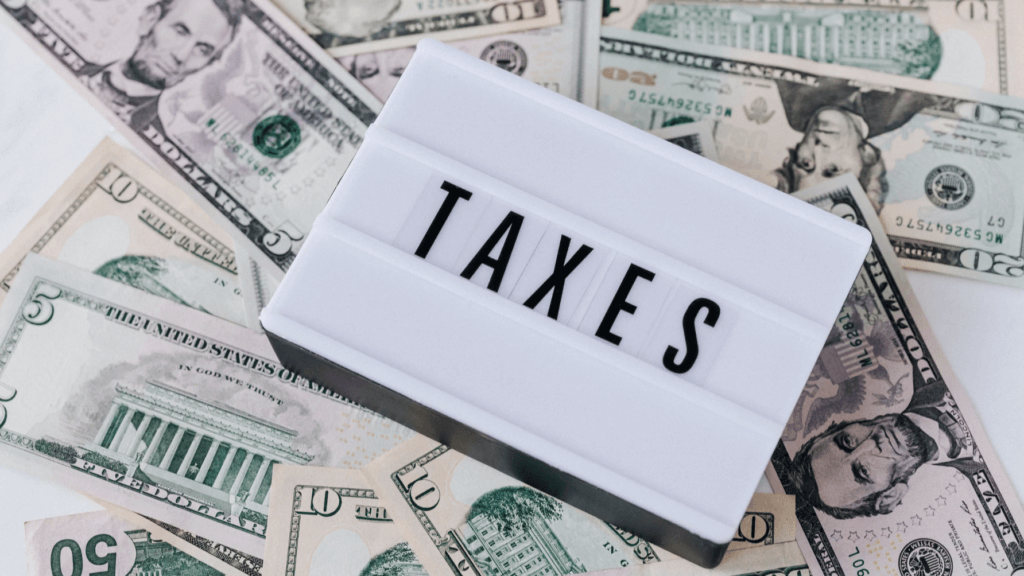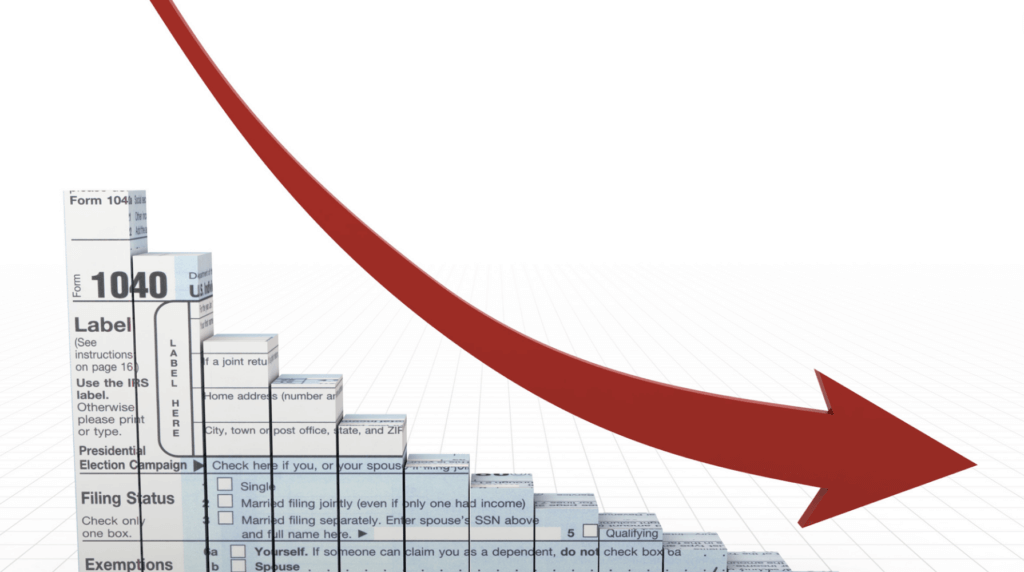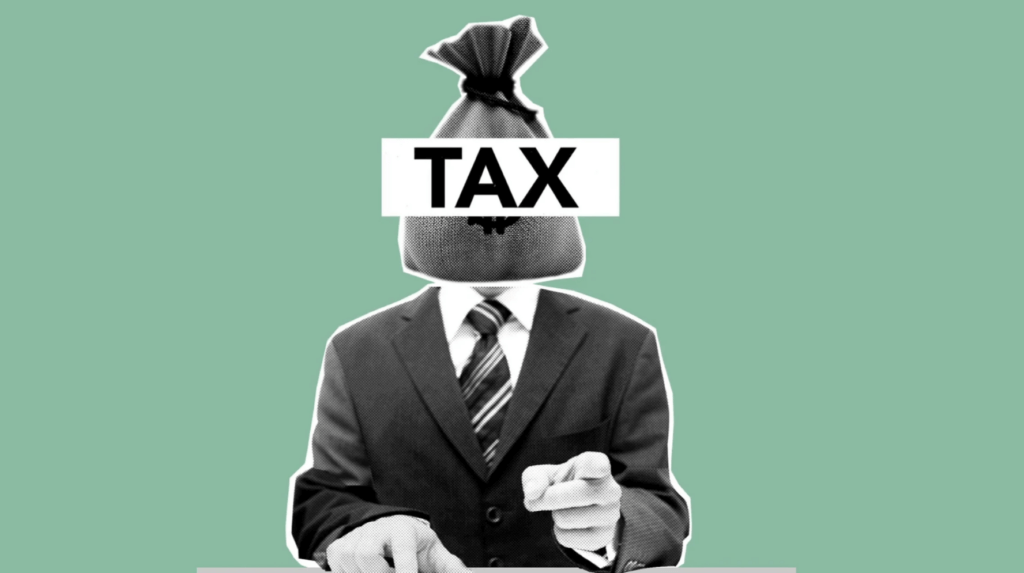
Taxes are one of your most significant expenses as a self-employed person. When you first start your freelance or consulting business, you might be surprised at your tax bill in your first few years. Fortunately, constantly getting hit with unexpected huge tax bills doesn’t have to be your fate. Follow this guide, and you will be able to minimize your tax bill with the the top 10 self employment tax deductions.
An Important Disclaimer About Taxes: While we have made efforts to ensure this information is correct and up to date, we cannot provide tax advice. If you have any questions about your specific situation, it is best to consult a tax accountant who understands self-employment taxes and related laws. Further, this guide is focused on taxes in the USA. If you live somewhere else, seek out appropriate local guidance. Let’s begin with the basics of tracking your income for taxes.
Minimise your tax bill by following these steps:
- Tracking your income for taxes
- What is form 1099?
- What are the various types of 1099 form?
- You can reduce your self-employed taxable income
- The top 10 self employment tax deductions
- Frequently asked questions about minimizing taxes
- What matters even more than taxes
1. Tracking Your Income For Taxes

Previously, we published the A-Z Guide To Managing Your Finances As A Freelancer to help freelancers better understand their finances. If you have already set up a financial system in business, reducing your taxes will be easier. If you do not have a small business accounting process in place, don’t worry. We’ll guide you on how to get started with your tax obligations.
As a self-employed person, your tax situation is fundamentally different from a person who has a conventional job. Instead of receiving a W2 form (i.e., a wage and tax form) from an employer, you will probably have other documents. For example, let’s say you have a web development business and work with five large clients this year. Many larger companies will issue a tax 1099 form to their freelancers and consultants.
A 1099 form is usually sent on an annual basis to help you prepare your taxes. While that is helpful, 1099 forms are not a replacement for invoices. You still need to send invoices every month (or when required by your contract) so that you get paid today. CheckYa lets you send unlimited invoices to clients globally so you can get paid promptly.
In other cases, you may simply send invoices to your clients using CheckYa.
2. What is Form 1099?
According to the Internal Revenue Service (IRS), this 1099-MISC form must be issued to each person a business has paid $600 or more each year. If you receive 1099 forms that cover all of your business income for a year, your tax return preparation will be much easier.
That being said, it’s entirely possible that you will not receive 1099 forms from all of your clients. This can happen for a few reasons. First, you might have some less sophisticated business clients who don’t know they have to issue a 1099 form to you. In addition, you might have clients in other countries like Canada, Australia, or the United Kingdom. International companies generally do not issue US tax forms unless they have a presence in America.
Bonus Read: How To Report Self-Employment Income Without 1099?
3. What Are The Various Types of 1099 Form?

The world of tax forms is complex! The first step to reducing your tax liability is to educate yourself on the basics. The IRS expects you to report all your income and pay the taxes you owe. For a self-employed individual, you may receive multiple forms depending on how you run your business.
Check out the following list of 1099 forms and make sure you receive all of the correct forms you need. There are more than a dozen 1099 forms. In the list below, we’re covering the forms that are typically most relevant to freelancers and other self-employed people.
3.1. 1099-MISC: Miscellaneous Income
Companies typically issue this form to their contractors and consultants. If you work with a large company, it’s virtually certain that you will receive a 1099-form each year summarizing your total income from that business. You will likely exclusively encounter 1099-MISC forms for beginning freelancers in your first few years in business.
3.2. 1099-DIV: Dividends and Distributions
Receiving dividends is an exciting way to receive income for a simple reason – the potential for lower taxes. As NerdWallet points out, qualified dividends come with a lower tax rate. There are typically three requirements for a dividend income to count as qualifying income. First, the income must come from a US corporation (or some foreign entities), the dividend must be seen as a dividend by the IRS, and you must have held the security for a certain amount of time.
At this point, you might be wondering how 1099-DIV applies to freelancers. In reality, there are two ways to earn dividend income.
The first way is to take part of your income and invest it in dividend-paying stocks. For example, AT&T stock had a dividend yield of 5.5% in April 2022. That means that $10,000 invested in AT&T stock would yield $550 in dividend income this year and potentially even more income in the future. You can also earn this form of income by investing in mutual funds, exchange-traded funds (ETFs), and other investments. The downside is that you need to earn money upfront, invest it, and then wait for the dividends to come in.
The second way to earn dividend income as a freelancer is an advanced and relatively risky strategy. When you seek out business clients, look for smaller companies willing to give you shares in the company as part of your compensation package. This might sound unfamiliar but keep in mind that many early startup companies offer equity (i.e., shares) to their employees. Eventually, you may be able to earn dividend income on those shares or sell those shares. That said, there is a significant risk involved. If the company fails or simply decides not to pay dividends, you will not receive any dividend income.
Another way to approach dividend income is to ask for shares in a company as a bonus payment. For example, if a sales or marketing consultant helps a company grow its revenue by 10%, they might request 1000 shares in the company as a bonus.
3.3. 1099-K: Merchant Card and Third-Party Network Payments
Form 1099-K is relevant to certain online business owners. For example, if you earn income from selling products in online auctions, then you may need to use this type of form. In addition, this type of form is relevant if you accept 200 payments or more than $20,000 in payments through merchant cards or a third-party network.
There is a chance that a freelancer or other self-employed person using CheckYa to earn income from clients may need to use form 1099-K. For example, let’s say that you use CheckYa to sell paid life coaching calls to clients. You sell each call for $500 each, and you end up selling 100 paid calls over the course of the year. In that case, form 1099-K may be relevant to your situation.
3.4. 1099-INT: Interest Income
Form 1099-INT is commonly used for a few situations. For example, your bank might pay you an interest rate on your savings account. You might also hold some interest-generating investments like bonds in your investment portfolio. For most freelancers, this form is relevant because it is wide to save and invest at least 10% of your income into investments.
It’s not just retirement accounts, either. Self-employed people sometimes struggle with unpredictable income. You might earn a lot this month and less next month. To cushion the blow of inconsistent income, it is wise to have a significant emergency fund equal to three to six months of living expenses. Use a website like Bankrate to find a high-interest savings account for your emergency account. As a result, you’ll be able to earn passive income from your emergency fund.
4. You Can Reduce Your Self-employed Taxable Income

There are a few ways to reduce your taxable income. Before getting into those strategies, keep your expectations reasonable. If you only earn $10,000 or $50,000 in your income, putting significant effort into tax planning doesn’t make much sense. Instead, you can likely increase your income faster by putting your energy into developing your skills, raising your prices, and applying yourself to sales and marketing. Once your income starts to increase, especially once you clear the $100,000 mark, thinking about reducing your self-employed taxable income is worthwhile.
To illustrate the potential of reducing your taxable income, let’s consider the scenario of a self-employed person who earns $100,000 per year in their business. According to the Tax Act Calculator, the self-employed person would owe several taxes such as Social Security for $12,400 and $2,900. That’s just part of your tax burden, though. You also have to consider state and federal income tax. According to the Tax Act tax bracket calculator, a single taxpayer would have to pay $40,811 in income taxes on self employment income of $100,000. That figure assumes you have claimed no deductions.
You’re not alone if you’re shocked at the tax bill example outlined above. Fortunately, you have some options to cut your tax bill. We’ll cover some of the most common strategies in the next section.
5. The Top 10 Self Employment Tax Deductions (1099 Misc Income)

As a self-employed business person, you have various options to cut your tax bill. The specific deductions will depend on various factors, including your income level and location. There are some states – Alaska, Florida, Nevada, New Hampshire, South Dakota, Tennessee, Texas, Washington and Wyoming – that do not have state income tax for example.
To help you save money, let’s look at some of the most common deductions. Deductions let you reduce your tax
5.1. Self-employment income tax deduction
As a self-employed person in the USA, you have to pay taxes for Medicare and Social Security. Fortunately, you can deduct 50% of those expenses as a deduction from your federal income tax. This is a simple deduction that applies to almost all freelancers and contractors.
5.2. Home office deduction
Do you work at home? If so, you might be able to reduce your income tax. To reduce your chance of an audit, keep this deduction reasonable. For example, you might use a single room of your home as a home office. If that room is 10% of your home, you can deduct 10% of home expenses like electricity and heating. Homeowners can deduct even more such as repairs, home depreciation and more.
5.3. Cut your tax bill with your cell phone and Internet connection
As a modern business owner, you probably pay for a monthly phone and Internet bill. CNBC reports that the average American cell phone bill is $127 per month (or $1524 per year). Further, the average US Internet bill is around $64 per month (or $768 per year). In total, you might be paying over $2000 per year just to stay connected!
For simplicity, let’s assume that you have a single cell phone and Internet connection that you use for business purposes and for non-business purposes. Estimate the amount of each service you use for business purposes (e.g. 25% or 50%) and you may be able to deduct that amount from your income tax bill.
5.4. The double benefits of staying informed
Many professionals find it valuable to subscribe to industry publications and news sources. For example, a management consultant might subscribe to the Wall St Journal. An advertising expert may have a subscription to Ad Week. These business subscriptions may be eligible for a tax deduction.
Paying for a news subscription is only truly valuable if you pull insights from those resources. If you find that magazines and newspapers pile up unread, it is better to cancel the subscription and save the money.
5.5. Business loan interest deduction
Large companies borrow money constantly to fund their expansion. There’s a good reason for that practice – the interest on business loans is tax deductible. As a freelancer or consultant, you may not borrow money very often. However, there are a few situations where this deduction can be useful.
For example, let’s say that you buy a new laptop this year to run your business. If you bought that laptop with a loan, the interest on that loan could be a tax deduction.
5.6. Business insurance deduction to lower 1099 misc income tax
In some situations, paying for business insurance is critically important. For example, technology consultants often find it valuable to pay for errors and omissions (E&O) insurance. This insurance is worthwhile because the technical consultant might make a mistake that could harm a client’s company. For example, a database error might accidentally destroy data. In that situation, your client’s business might suffer and you might need to make an insurance claim.
If your type of business requires insurance, you can get a tax deduction for that expense.
5.7. New business startup costs
Many tax deductions have complex rules but this deduction is different. The government wants to encourage people to start new businesses. Therefore, you’re allowed to deduct $5,000 in your company’s first year of operation.
For example, a life coach or management consultant might pay for the following expenses to launch their business.
- Business formation.
You might decide to set up a LLC (limited liability company) structure for your business. The expenses for creating your business structure are typically tax deductible.
- Tax and accounting fees.
Paying for professional advice to organize your new business is often smart. You might ask an accountant to help you choose a business structure, track expenses and plan your taxes. A lawyer can help you set up a standard contract for your projects. These expenses are typically considered deductibable
- Market research.
Coming up with a winning business idea for a new product or service can take time and expense to develop. Let’s say that you want to create and sell productivity tools to help people achieve their goals. To help you refine your ideas, you might decide to buy three popular planners like the Full Focus Planner, the High Performance Planner and the Clear Journal. These purchases may be considered market research which is usually eligible for a tax deduction.
- Advertising
Attracting new customers is tough! That’s why most companies spend money on marketing. You might pay a copywriter to write Google Ads for you and then spend $1,000 on Google Ads. These expenses are designed to help you attract clients so you can claim them as a tax deduction.
- Business travel
Travelling across the country to attend a business conference can help you grow your network faster. The costs of attending the event – registration fees, plane tickets and more – are eligible for a tax deduction. However, the IRS usually does not allow you to deduct expenses for local travel. For example, if you live in New York City and attend a business event in NYC, you can probably only deduct the direct cost of the event (i.e. the registration fee).
5.8. Retirement plan contribution
When you go into business for yourself, you no longer have an employer helping you pay for your retirement. The good news is that the government wants to encourage people to save and invest for their retirement, including self employed people! There are multiple plans available to business owners
- Solo 401(k)
This type of retirement plan is often a good fit for freelancers and consultants. It covers a maximum of two people (i.e. the business owner and their spouse). The amount you can contribute deductions on your income and age. A 30 year old business owner with a $100,000 net income and an unincorporated business can contribute $36,587 to their plan according to a Bankrate calculator.
- SEP IRA
SEP stands for Simplified Employee Pension and it is a powerful way to reduce your tax bill. Unlike the solo 401(k), the SEP IRA lets you expand to cover up to 100 employees. The amount you can contribute changes depending on your income and the year.
According to the IRS website, the maximum annual contribution to a SEP-IRA is as follows:
“The contributions you make to each employee’s SEP-IRA each year cannot exceed the lesser of:
- 25% of compensation, or
- $61,000 for 2022 ($58,000 for 2021; $57,000 for 2020 and subject to annual cost-of-living adjustments for later years).
Contributing money to a retirement investment plan is easily one of the best ways to cut your tax bill. If you are new to saving to retirement, start small. Save just $100 per month and gradually increase your contributions until you are saving at least 10% per month.
5.9. Business software expenses to minimise 1099 misc income taxes
Many online business owners use software as a service (SaaS) products to run their business. For example, you might use Quickbooks to keep your business finances organized. Further, you might pay for a Zoom subscription to hold video meetings with clients. Other consultants might find it useful to pay for software like ClickFunnels to set up marketing campaigns for clients.
5.10. Health Insurance premiums to reduce 1099 misc income taxes
For many freelancers and other self employed people in the US, health insurance is a major expense. On average, health premiums can cost over $1000 per month for a family according to eHealth Insurance.
Fortuantely, it is usually possible to deduct the cost of health insurance premiums from your tax bill. There are just two criteria you have to meet. First, your business must have reported a report. Second, you can’t already be covered by an employer provided health plan.
6. Frequently Asked Questions About Minimizing 1099 Misc Income Taxes
6.1. I’m worried about getting audited by the IRS. What should I do?
The IRS periodically carries out audits on tax payers. These audits can be a painful experience if you are not prepared. There are a few ways to prepare yourself. First, keep records of receipts to back up your expenses for at least seven years. Second, some tax deductions require judgement. Therefore, it may be worthwhile to seek advice from a tax accountant if you are unsure. Finally, keep in mind that your statistical chance of being audited is fairly low. In fiscal year 2021, the IRS audited about 40,000 returns out of the millions of returns submitted.
6.2. Should I pay myself in dividends to reduce my taxes?
Paying yourself dividends can help you to cut your tax bill. However, it is uneasy to push this strategy too far. Instead, most self employed business owners find it advantageous to pay themselves in a combination of salary and dividends. For advice specific to your situation, speak to a tax professional.
6.3. I have a side hustle business that reported a loss this year. How does that affect my taxes?
Many people start their business on a part time basis (i.e. a side hustle) while they have a full time job. When you first get start your business, you might not earn much and still have expenses. For example, let’s say you start your business in October and earn $500 but incur $1000 in business expenses. In this scenario, your business had a loss of $500 and that loss may reduce your tax bill further.
7. What Matters Even More Than Taxes
Paying your taxes on time matters. Yet, it is not the most important thing in business. Until you get paid by clients and customers, your business is little more than an idea. Use CheckYa to send invoices and get payments right into your bank account – click here to sign up for CheckYa now!